
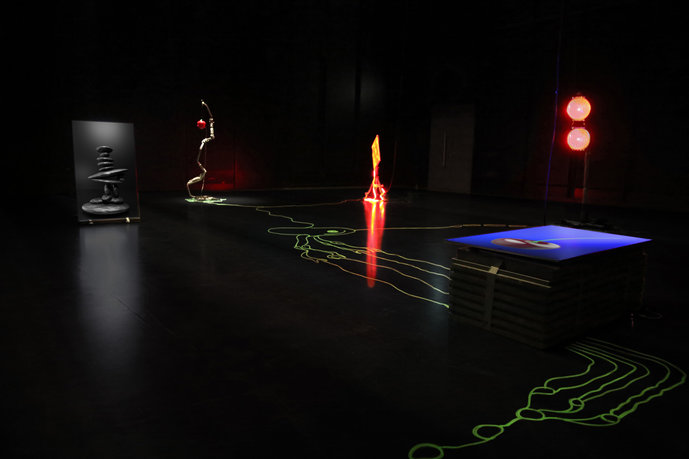
Installation Overview (© Mathias Lempart)

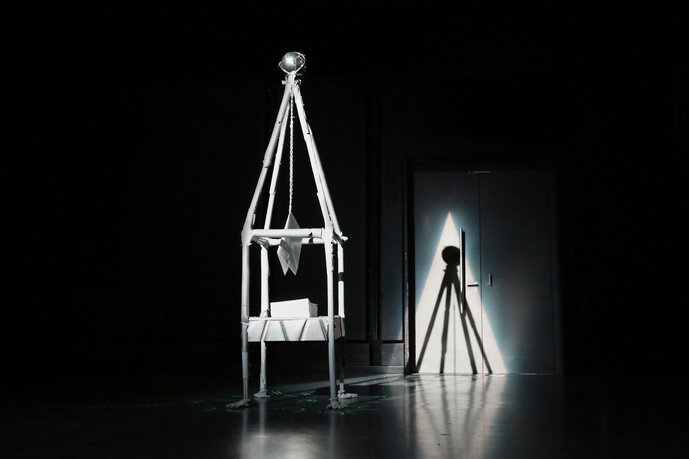
Hauke (© Mathias Lempart)

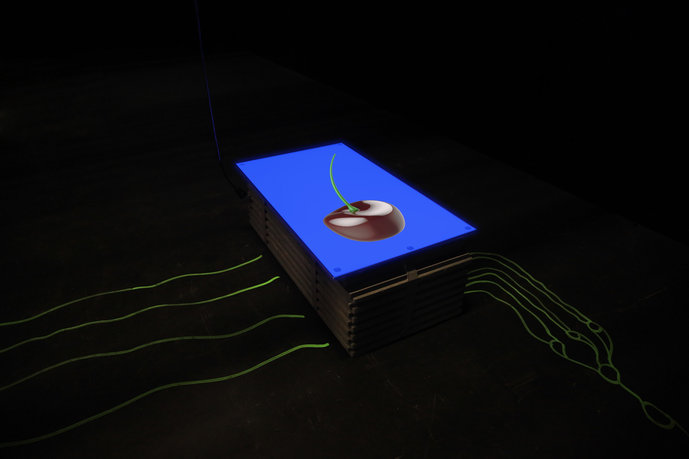
Sophia (© Mathias Lempart)

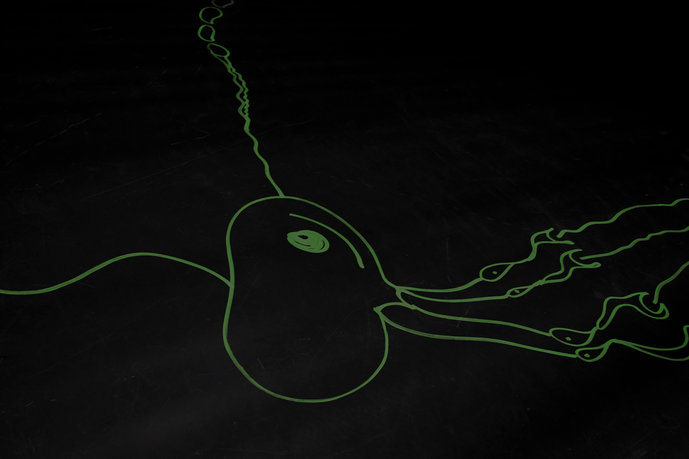
Floor detail (© Mathias Lempart)

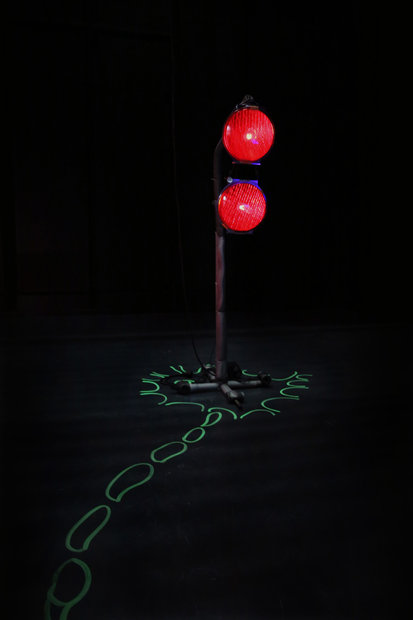
Severin (© Mathias Lempart)

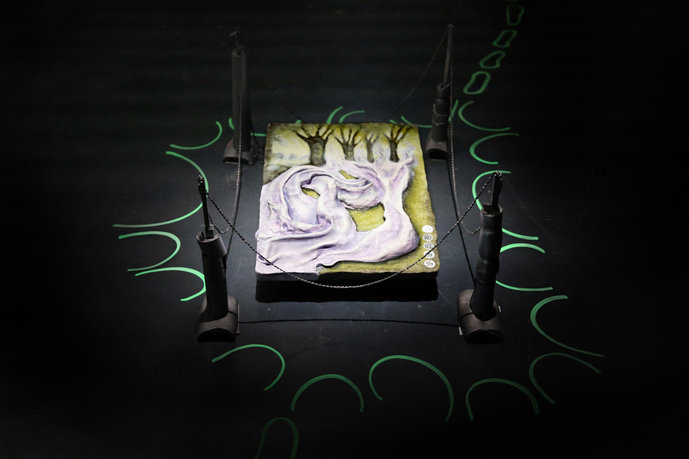
Xavier (© Mathias Lempart)

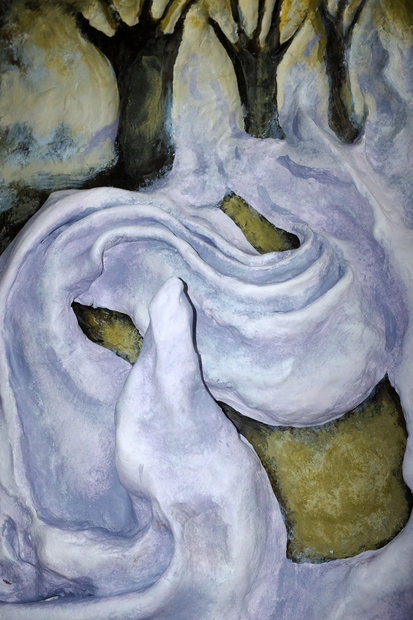
Xavier (Detail) (© Mathias Lempart)

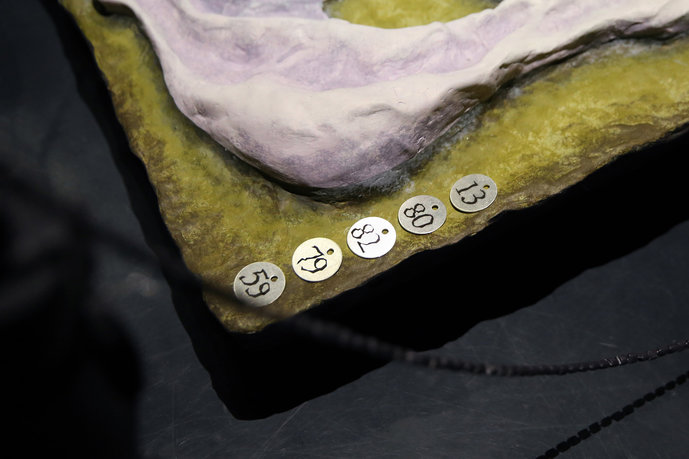
Xavier (Detail) (© Mathias Lempart)

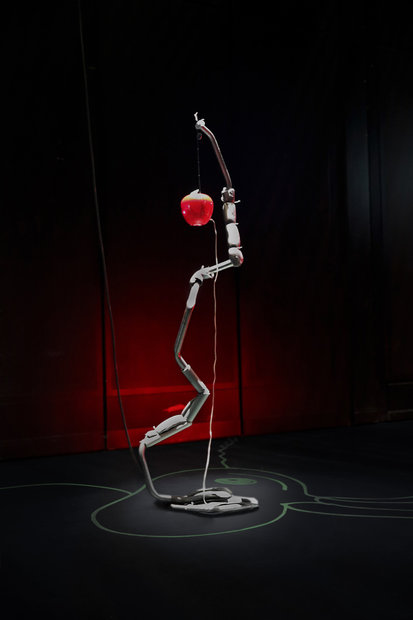
Michelle (© Mathias Lempart)

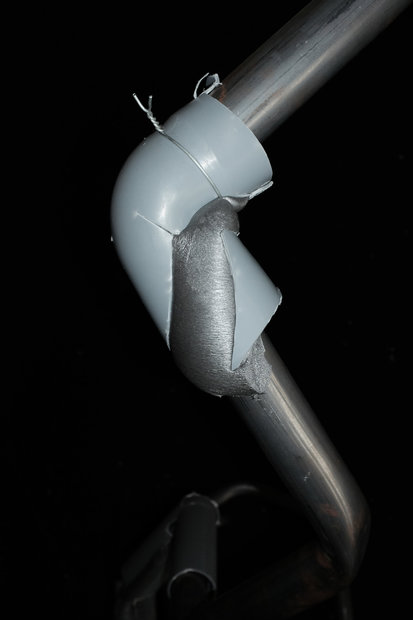
Michelle (Detail) (© Mathias Lempart)

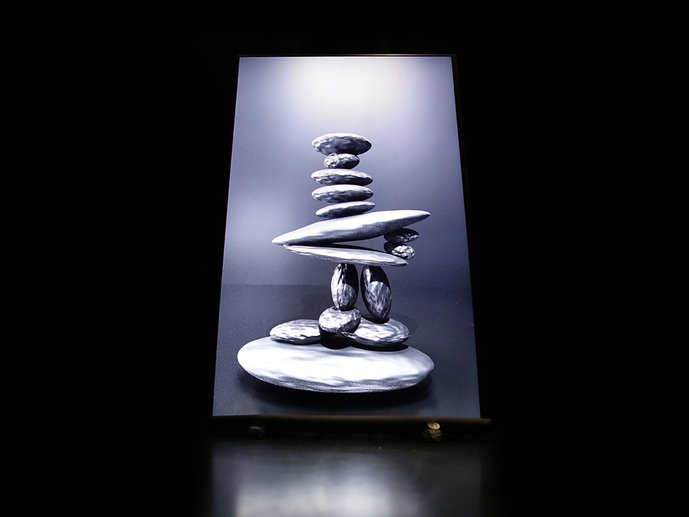
Soeren (© Mathias Lempart)


Diane (© Mathias Lempart)

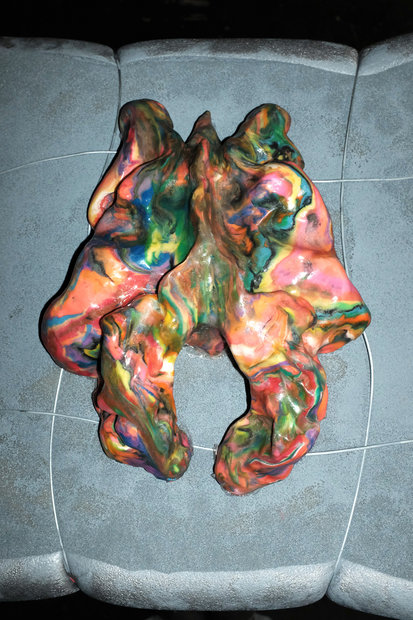
Diane (Detail) (© Mathias Lempart)

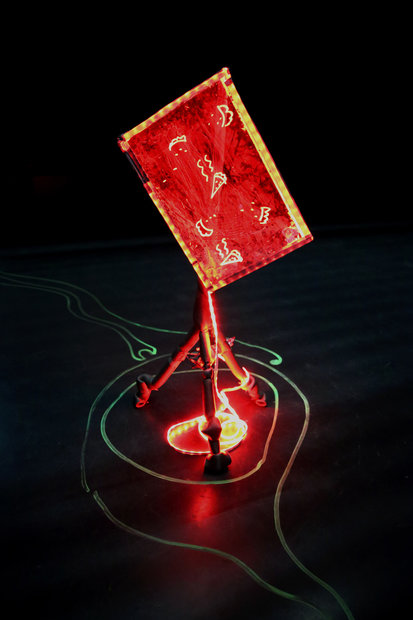
Paula (© Mathias Lempart)
Are we able to represent human feelings? How might we communicate them and ultimately, turn them into a visual experience? In regards to the representation and transmission of subjective perception, popular conceptions of an ostensibly objective design practice quickly reach their limit. The immense interest in the topic, as in the transgression of prevailing norms of representation, brings to mind the current hype for immersive production, where an immediate experience is created by means of physical and psychological immersion. Mathias Lempart uses the example of migraine in order to test the ways one might visualize pain. The exhibition is the final step in an extensive research and production process that spanned an entire year. His research cleverly incorporates his findings and expeditions around the archives and museum displays of the Welcome Collection, London (UK), Teylers Museum, Haarlem (NL) and the Museum of Jurassic Technology, Los Angeles (USA). The resulting “buildings” read as characters, or strange anthropomorphic structures that have been animated through audio and video, and in the case of Severin even provokes the viewer to activate the sound sensitive red traffic light, so that many viewers could be seen clapping and even screaming before the work. These animated bodies are rooted in real accounts of five patients who suffer from severe migraine. There is an apparent subversion of exhibition design, museum codes, and symbols—while Lempart might appear to be celebrating the provisional or naïve form, he seems particularly astute at activating the complex data he obtained from his migraine interviewees and his own experience.
(Text by Anna Schanowski)
Supervision: Prof. Rebecca Stephany, Prof. Sereina Rothenberger, Prof. Andreas Müller, Prof. Volker Albus, Prof. Mario Minale, Prof. Matthias Bruhn